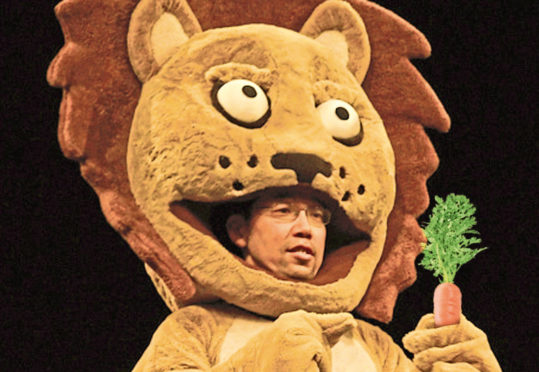Adults are constantly being bombarded with advice on what’s good to eat and what high-fat or sugary foods to avoid, while parents always aim to give their children the best possible foods to eat.
But how often do we stop and really think about the whole story behind what it is we are actually eating?
This is an issue that’s being addressed, in a fun and informative way, in the highly entertaining children’s show, Eaten, which can be seen in Inverness and Banchory this weekend.
The show has been created by Mamoru Iriguchi, an award-winning performance maker and theatre designer who lives in Edinburgh.
And while it’s in the glitzy world of showbusiness that he’s chosen to make his career, his background is in zoology.
“The idea for the show came as a result of me studying zoology at university where I studied animal behaviour and ecology then became curious about animals who are eaten by other animals,” said Mamoru.
“The majority of animals are eaten by other animals but they can’t live in fear, and what happens to the creatures that don’t die as a result of being eaten, but continue to live on in the stomach, etc?
“It’s a much more interesting process than kill or be killed and often we don’t know what we’re eating any more because things are so processed.”
The show, which is suitable for youngsters aged six and over, looks at food, eating it and being eaten and encourages children and adults in the audience to carefully examine what they eat and re-think their relationship with food and nature.
Donning a lion costume, Mamoru simultaneously plays the roles of the eater (Lionel McLion, a lion who dreams of being a vegetarian) and the eaten (Mamoru the human who loves meat) resulting in a dialogue about food between the predator and his prey, locked in one body.
In this case, Lionel hasn’t chewed his food so well so Mamoru’s alive and well in his stomach, and now wants to say hello.
A strange friendship between the eater and the eaten starts to grow.
Mamoru and co-performer Suzi Cunningham encourage members of the audience to come and join them on the stage during the show.
“At one point I come out of the lion’s bottom as poo, which the children find very comical, but that encourages them to think about their own digestive systems.
“When I tell them I’m Dr Poo from the Poo-niversity they think that’s funny but that also encourages them to ask lots of questions,” said Mamoru, 52, who wrote and created the whimsical show.
“I’ve been creating shows for adults for nearly 10 years but this is my first children’s show.
“This is also the first time I’ve combined what I used to study with what I’m doing now,” said Mamoru, who has also worked as a theatre and costume designer.
“It’s great being able to perform to young audiences as, unlike adult audiences, they haven’t chosen to be there, but have been taken there by an adult.
“That means you have to work hard on your acting skills to reach them.”
Having previously received four-star reviews from critics, it seems that Eaten is a show youngsters, and adults, can really get their teeth into…
Catch the show at Eden Court, Inverness, on Saturday October 5, at 2pm (01463 234234) and The Barn, Banchory, on Sunday October 6, at 2.30pm (01330 825431).
